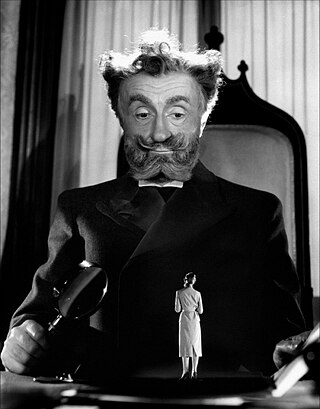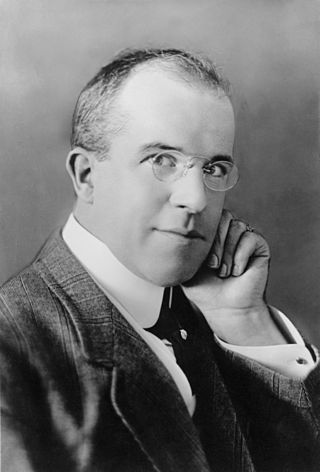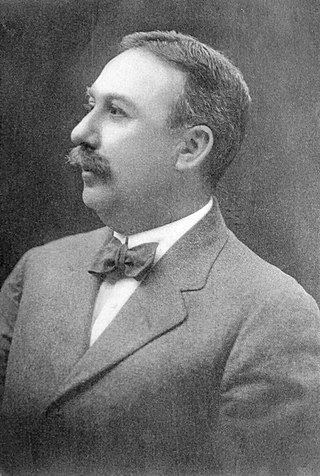The history of film chronicles the development of a visual art form created using film technologies that began in the late 19th century.

The substitution splice or stop trick is a cinematic special effect in which filmmakers achieve an appearance, disappearance, or transformation by altering one or more selected aspects of the mise-en-scène between two shots while maintaining the same framing and other aspects of the scene in both shots. The effect is usually polished by careful editing to establish a seamless cut and optimal moment of change. It has also been referred to as stop motion substitution or stop-action.

Special effects are illusions or visual tricks used in the theatre, film, television, video game, amusement park and simulator industries to simulate the imagined events in a story or virtual world. It used to be called SFX but this short form has also expanded to include “sound effects” as well.

The electric chair is a specialized device employed for carrying out capital punishment through the process of electrocution. During its use, the individual sentenced to death is securely strapped to a specially designed wooden chair and electrocuted via strategically positioned electrodes affixed to the head and leg. This method of execution was conceptualized by Alfred P. Southwick, a dentist based in Buffalo, New York, in 1881. Over the following decade, this execution technique was developed further, aiming to provide a more humane alternative to the conventional forms of execution, particularly hanging. The electric chair was first utilized in 1890 and subsequently became known as a symbol of this method of execution.
The following is an overview of the events of 1895 in film, including a list of films released and notable births.

Electrocution is death or severe injury caused by electric shock from electric current passing through the body. The word is derived from "electro" and "execution", but it is also used for accidental death.
Visual effects is the process by which imagery is created or manipulated outside the context of a live-action shot in filmmaking and video production. The integration of live-action footage and other live-action footage or CGI elements to create realistic imagery is called VFX.

James Stuart Blackton was a British-American film producer and director of the silent era. One of the pioneers of motion pictures, he founded Vitagraph Studios in 1897. He was one of the first filmmakers to use the techniques of stop-motion and drawn animation, is considered a father of American animation, and was the first to bring many classic plays and books to the screen. Blackton was also the commodore of the Motorboat Club of America and the Atlantic Yacht Club.

Edwin Stanton Porter was an American film pioneer, most famous as a producer, director, studio manager and cinematographer with the Edison Manufacturing Company and the Famous Players Film Company. Of over 250 films created by Porter, his most important include What Happened on Twenty-third Street, New York City (1901), Jack and the Beanstalk (1902), Life of an American Fireman (1903), The Great Train Robbery (1903), The European Rest Cure (1904), The Kleptomaniac (1905), Life of a Cowboy (1906), Rescued from an Eagle's Nest (1908), and The Prisoner of Zenda (1913).

The Biograph Company, also known as the American Mutoscope and Biograph Company, was a motion picture company founded in 1895 and active until 1916. It was the first company in the United States devoted entirely to film production and exhibition, and for two decades was one of the most prolific, releasing over 3000 short films and 12 feature films. During the height of silent film as a medium, Biograph was the most prominent U.S. film studio and one of the most respected and influential studios worldwide, only rivaled by Germany's UFA, Sweden's Svensk Filmindustri and France's Pathé. The company was home to pioneering director D. W. Griffith and such actors as Mary Pickford, Lillian Gish, and Lionel Barrymore.

Charles Morand Pathé was a pioneer of the French film and recording industries. As the founder of Pathé Frères, its roots lie in 1896 Paris, France, when Pathé and his brothers pioneered the development of the moving image. Pathé adopted the national emblem of France, the cockerel, as the trademark for his company. After the company, now called Compagnie Générale des Éstablissements Pathé Frères Phonographes & Cinématographes, invented the cinema newsreel with Pathé-Journal.

Sherlock Holmes Baffled is an American silent trick film created in 1900 with cinematography by Arthur Marvin. It is the earliest known film to feature Arthur Conan Doyle's detective character Sherlock Holmes, albeit in a form unlike that of later screen incarnations. In the film, a thief who can appear and disappear at will steals a sack of items from Sherlock Holmes. At each point, Holmes's attempts to thwart the intruder end in failure.

Marie-Georges-Jean Méliès was a French magician, actor, and film director. He led many technical and narrative developments in the early days of cinema.

In the early history of cinema, trick films were short silent films designed to feature innovative special effects.

The Vanishing Lady is an 1896 French silent trick film directed by Georges Méliès. It features Méliès and Jehanne d'Alcy performing a trick in the manner of a stage illusion, in which D'Alcy disappears into thin air. A skeleton appears in her place before she finally returns for a curtain call.

George Edward Fell was an American surgeon and inventor. He was an early developer of artificial ventilation and also investigated the physiology of electrocution, a line of research that led to Fell creating the final design for the first electric chair.

Alfred Clark was a pioneer of music recording and cinema. As a cameraman and director of productions at Edison's first studio, he was the first to make moving pictures with innovations like continuity, plot, trained actors and special effects. In 1896, he joined Emile Berliner's Gramophone Company and then went to Europe where he became an important manager of companies like HMV and EMI. He was naturalized as a British citizen in 1928 and he became a leading member of the Oriental Ceramic Society in London, establishing a valuable collection including rare pieces which had been made for the emperors of the Tang and Song dynasty.
Le Bourreau turc, sold in the United States as The Terrible Turkish Executioner, or It Served Him Right and in Britain as What Befell the Turkish Executioner, is a 1903 French silent trick film by Georges Méliès. It was sold by Méliès's Star Film Company and is numbered 534–535 in its catalogues.
The Enchanted Toymaker is a 1904 British short film, directed and animated by Arthur Melbourne-Cooper. Its running time was 3 minutes and 10 seconds. It combined live-action and stop-motion animation.
Events in 1895 in animation.














